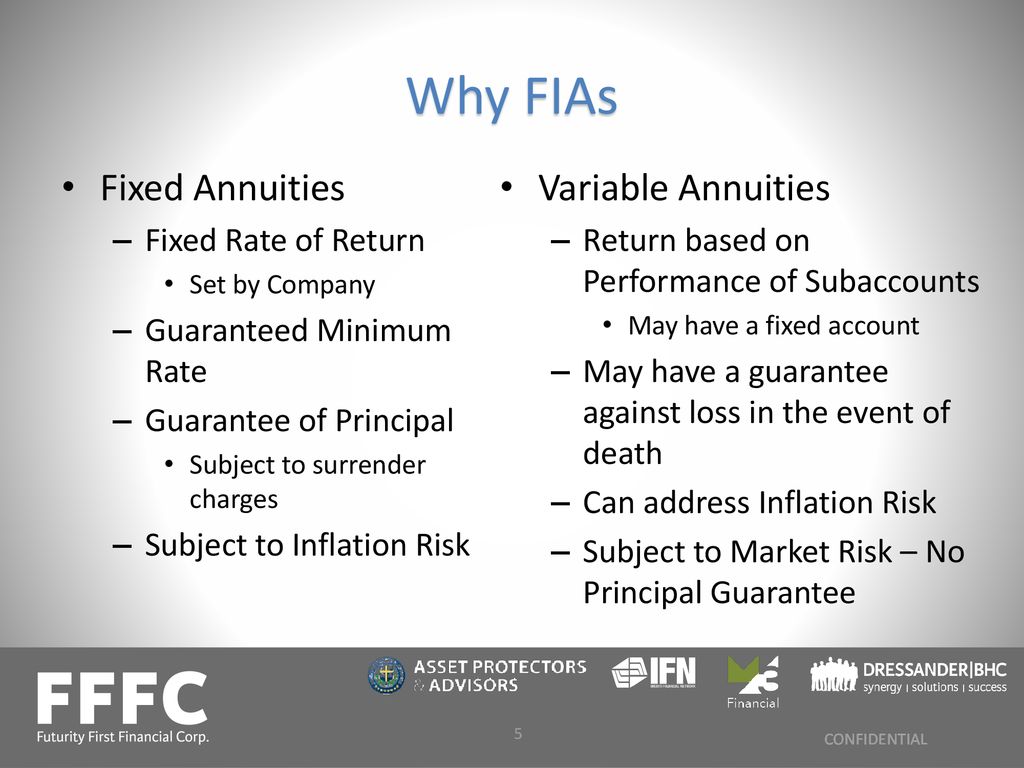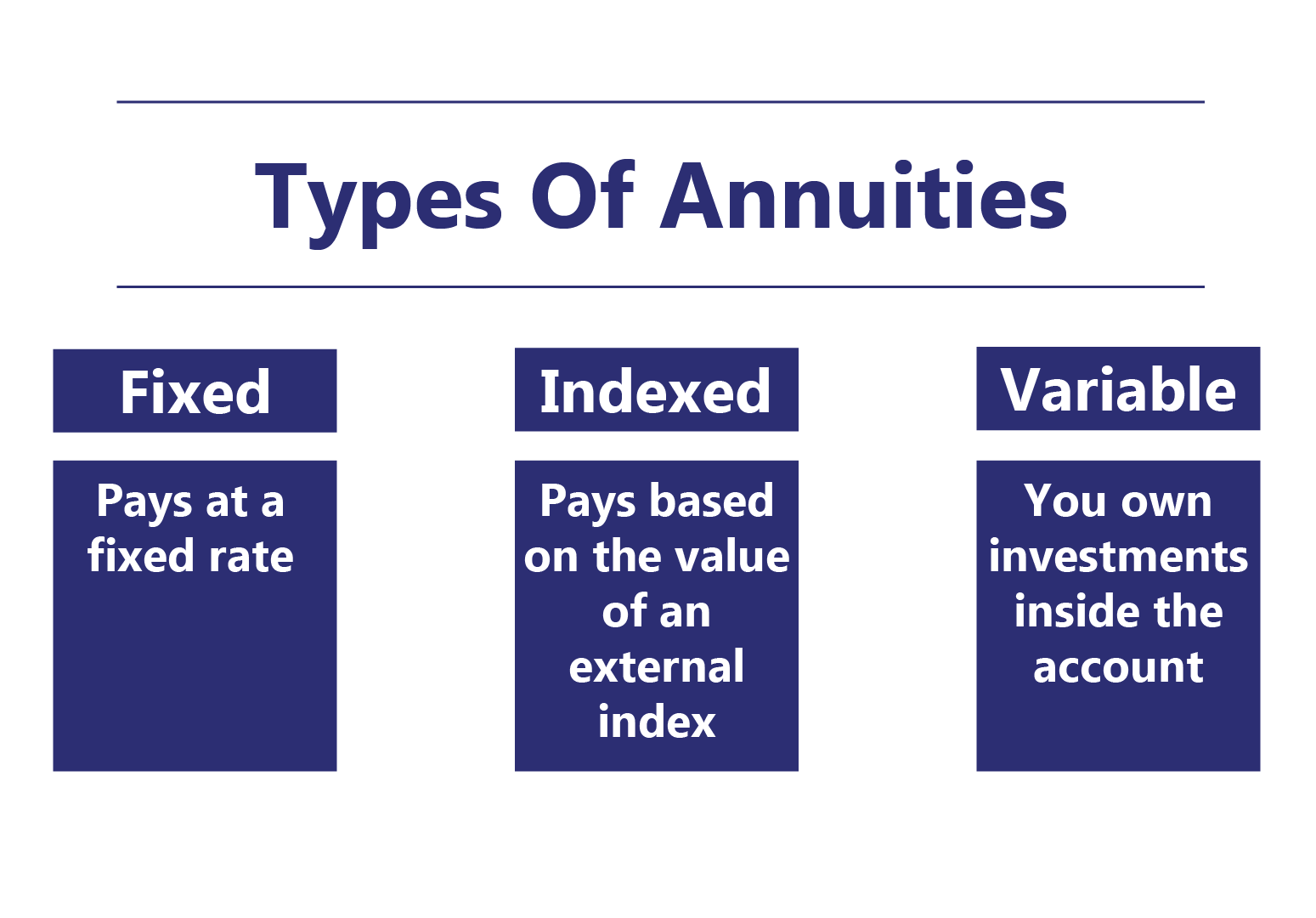All Categories
Featured
Table of Contents
The payment could be spent for growth for an extended period of timea single premium delayed annuityor invested for a short time, after which payment beginsa single premium instant annuity. Solitary costs annuities are frequently funded by rollovers or from the sale of a valued asset. A versatile costs annuity is an annuity that is intended to be moneyed by a collection of payments.
Owners of fixed annuities understand at the time of their purchase what the worth of the future cash flows will be that are generated by the annuity. Undoubtedly, the number of capital can not be known beforehand (as this relies on the contract proprietor's life expectancy), yet the assured, fixed rates of interest at the very least gives the owner some level of certainty of future revenue from the annuity.
While this distinction seems straightforward and straightforward, it can dramatically impact the worth that an agreement proprietor eventually originates from his or her annuity, and it develops significant unpredictability for the agreement proprietor - Fixed annuity contracts. It additionally usually has a material influence on the level of charges that a contract proprietor pays to the providing insurance provider
Fixed annuities are usually made use of by older investors who have actually restricted properties however who want to offset the danger of outlasting their assets. Set annuities can act as an efficient device for this function, though not without particular disadvantages. For instance, in the case of prompt annuities, once an agreement has been purchased, the agreement proprietor gives up any type of and all control over the annuity possessions.
Analyzing Fixed Annuity Or Variable Annuity Key Insights on Your Financial Future Breaking Down the Basics of Investment Plans Features of Smart Investment Choices Why Choosing the Right Financial Strategy Is a Smart Choice Deferred Annuity Vs Variable Annuity: A Complete Overview Key Differences Between Different Financial Strategies Understanding the Key Features of Tax Benefits Of Fixed Vs Variable Annuities Who Should Consider Strategic Financial Planning? Tips for Choosing the Best Investment Strategy FAQs About Planning Your Financial Future Common Mistakes to Avoid When Planning Your Retirement Financial Planning Simplified: Understanding Your Options A Beginner’s Guide to Smart Investment Decisions A Closer Look at Indexed Annuity Vs Fixed Annuity
For example, a contract with a common 10-year abandonment period would bill a 10% abandonment fee if the agreement was surrendered in the initial year, a 9% surrender fee in the second year, and so forth until the surrender charge reaches 0% in the agreement's 11th year. Some deferred annuity agreements contain language that enables small withdrawals to be made at various intervals throughout the surrender period scot-free, though these allocations commonly come at a cost in the form of lower guaranteed rate of interest prices.
Equally as with a taken care of annuity, the owner of a variable annuity pays an insurance provider a swelling sum or series of repayments in exchange for the promise of a series of future settlements in return. But as stated above, while a fixed annuity grows at an assured, continuous rate, a variable annuity expands at a variable price that relies on the efficiency of the underlying investments, called sub-accounts.
Throughout the build-up phase, possessions spent in variable annuity sub-accounts grow on a tax-deferred basis and are strained only when the contract owner takes out those earnings from the account. After the accumulation phase comes the income phase. Gradually, variable annuity properties need to in theory enhance in worth till the agreement proprietor decides she or he would such as to begin taking out money from the account.
The most significant problem that variable annuities usually present is high price. Variable annuities have numerous layers of fees and expenses that can, in aggregate, create a drag of up to 3-4% of the contract's worth each year.
M&E expense charges are computed as a percentage of the agreement worth Annuity companies pass on recordkeeping and other administrative expenses to the agreement proprietor. This can be in the kind of a level yearly charge or a percent of the agreement value. Administrative charges may be included as part of the M&E risk charge or may be evaluated separately.
These costs can range from 0.1% for passive funds to 1.5% or even more for proactively managed funds. Annuity contracts can be customized in a variety of ways to offer the details demands of the contract owner. Some common variable annuity riders consist of ensured minimum accumulation advantage (GMAB), guaranteed minimum withdrawal benefit (GMWB), and assured minimal revenue advantage (GMIB).
Exploring Variable Vs Fixed Annuity A Comprehensive Guide to Fixed Vs Variable Annuity Pros Cons Defining Fixed Index Annuity Vs Variable Annuities Advantages and Disadvantages of Different Retirement Plans Why Choosing the Right Financial Strategy Is a Smart Choice How to Compare Different Investment Plans: How It Works Key Differences Between Fixed Annuity Vs Equity-linked Variable Annuity Understanding the Risks of Immediate Fixed Annuity Vs Variable Annuity Who Should Consider Variable Annuity Vs Fixed Annuity? Tips for Choosing Fixed Income Annuity Vs Variable Annuity FAQs About Retirement Income Fixed Vs Variable Annuity Common Mistakes to Avoid When Planning Your Retirement Financial Planning Simplified: Understanding Your Options A Beginner’s Guide to Variable Vs Fixed Annuities A Closer Look at Tax Benefits Of Fixed Vs Variable Annuities
Variable annuity payments provide no such tax deduction. Variable annuities have a tendency to be extremely ineffective cars for passing riches to the future generation because they do not delight in a cost-basis modification when the original contract owner passes away. When the owner of a taxed investment account dies, the expense bases of the investments kept in the account are gotten used to mirror the marketplace costs of those investments at the time of the proprietor's fatality.
Such is not the case with variable annuities. Investments held within a variable annuity do not get a cost-basis adjustment when the initial proprietor of the annuity passes away.

One significant issue connected to variable annuities is the potential for problems of rate of interest that may feed on the part of annuity salespeople. Unlike an economic consultant, that has a fiduciary responsibility to make financial investment decisions that profit the client, an insurance broker has no such fiduciary obligation. Annuity sales are extremely financially rewarding for the insurance coverage professionals who market them as a result of high ahead of time sales commissions.
Many variable annuity agreements have language which positions a cap on the portion of gain that can be experienced by specific sub-accounts. These caps avoid the annuity proprietor from completely taking part in a section of gains that can or else be appreciated in years in which markets create substantial returns. From an outsider's point of view, it would certainly appear that investors are trading a cap on investment returns for the previously mentioned ensured flooring on investment returns.
Exploring the Basics of Retirement Options Everything You Need to Know About Variable Annuity Vs Fixed Annuity Defining Immediate Fixed Annuity Vs Variable Annuity Benefits of Choosing the Right Financial Plan Why Choosing the Right Financial Strategy Is Worth Considering Fixed Indexed Annuity Vs Market-variable Annuity: How It Works Key Differences Between Deferred Annuity Vs Variable Annuity Understanding the Key Features of Long-Term Investments Who Should Consider Strategic Financial Planning? Tips for Choosing Indexed Annuity Vs Fixed Annuity FAQs About Planning Your Financial Future Common Mistakes to Avoid When Choosing a Financial Strategy Financial Planning Simplified: Understanding Your Options A Beginner’s Guide to Fixed Vs Variable Annuities A Closer Look at Variable Annuity Vs Fixed Indexed Annuity
As noted above, surrender costs can significantly restrict an annuity proprietor's capability to relocate properties out of an annuity in the early years of the contract. Better, while a lot of variable annuities allow contract proprietors to take out a defined amount throughout the build-up stage, withdrawals past this quantity commonly lead to a company-imposed charge.
Withdrawals made from a set rate of interest price financial investment choice might also experience a "market price modification" or MVA. An MVA changes the value of the withdrawal to reflect any changes in rate of interest prices from the time that the cash was invested in the fixed-rate choice to the moment that it was taken out.

Frequently, also the salesmen who offer them do not completely recognize exactly how they work, therefore salesmen in some cases exploit a customer's feelings to market variable annuities as opposed to the merits and viability of the items themselves. Our company believe that capitalists should fully recognize what they possess and how much they are paying to have it.
Nonetheless, the same can not be stated for variable annuity assets held in fixed-rate investments. These assets lawfully come from the insurance provider and would as a result go to danger if the company were to fail. Similarly, any warranties that the insurance provider has actually consented to give, such as an ensured minimal revenue advantage, would certainly be in concern in case of a service failing.
Breaking Down Your Investment Choices A Closer Look at Fixed Index Annuity Vs Variable Annuity What Is Variable Annuity Vs Fixed Annuity? Advantages and Disadvantages of Different Retirement Plans Why Choosing the Right Financial Strategy Is a Smart Choice How to Compare Different Investment Plans: A Complete Overview Key Differences Between Different Financial Strategies Understanding the Rewards of Long-Term Investments Who Should Consider Strategic Financial Planning? Tips for Choosing Fixed Interest Annuity Vs Variable Investment Annuity FAQs About Planning Your Financial Future Common Mistakes to Avoid When Choosing a Financial Strategy Financial Planning Simplified: Understanding What Is A Variable Annuity Vs A Fixed Annuity A Beginner’s Guide to Smart Investment Decisions A Closer Look at How to Build a Retirement Plan
Potential purchasers of variable annuities ought to understand and think about the financial condition of the providing insurance policy business prior to getting in right into an annuity agreement. While the advantages and disadvantages of numerous sorts of annuities can be debated, the actual concern surrounding annuities is that of viability. Simply put, the question is: who should own a variable annuity? This question can be difficult to respond to, offered the myriad variants available in the variable annuity universe, however there are some basic standards that can aid capitalists choose whether or not annuities must contribute in their economic strategies.
As the stating goes: "Customer beware!" This post is prepared by Pekin Hardy Strauss, Inc. ("Pekin Hardy," dba Pekin Hardy Strauss Riches Monitoring) for informative objectives only and is not intended as a deal or solicitation for company. The information and information in this write-up does not constitute legal, tax, accountancy, investment, or other professional guidance.
Table of Contents
Latest Posts
Exploring the Basics of Retirement Options Everything You Need to Know About Financial Strategies Defining Fixed Interest Annuity Vs Variable Investment Annuity Benefits of Fixed Indexed Annuity Vs Ma
Highlighting the Key Features of Long-Term Investments Key Insights on What Is A Variable Annuity Vs A Fixed Annuity What Is Variable Vs Fixed Annuities? Advantages and Disadvantages of Different Reti
Breaking Down Your Investment Choices A Comprehensive Guide to Investment Choices What Is the Best Retirement Option? Pros and Cons of Variable Annuities Vs Fixed Annuities Why Choosing the Right Fina
More
Latest Posts